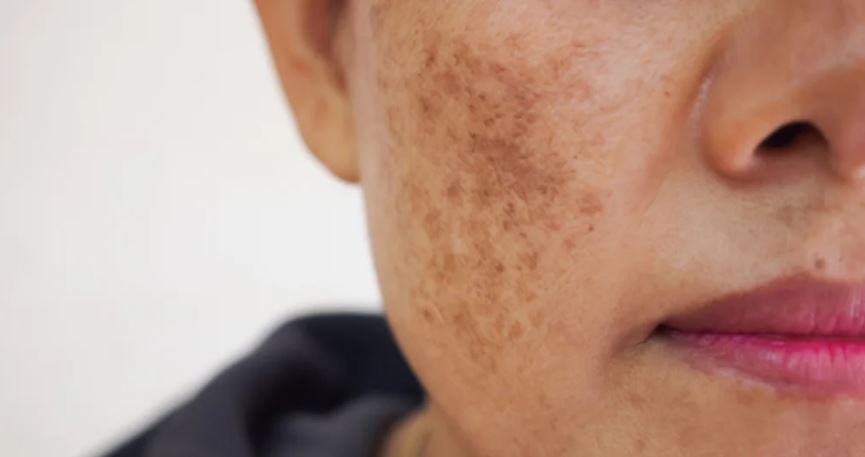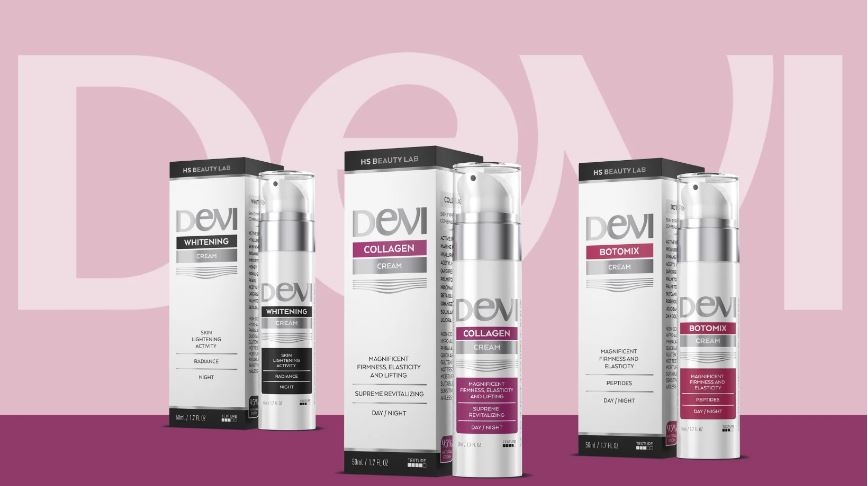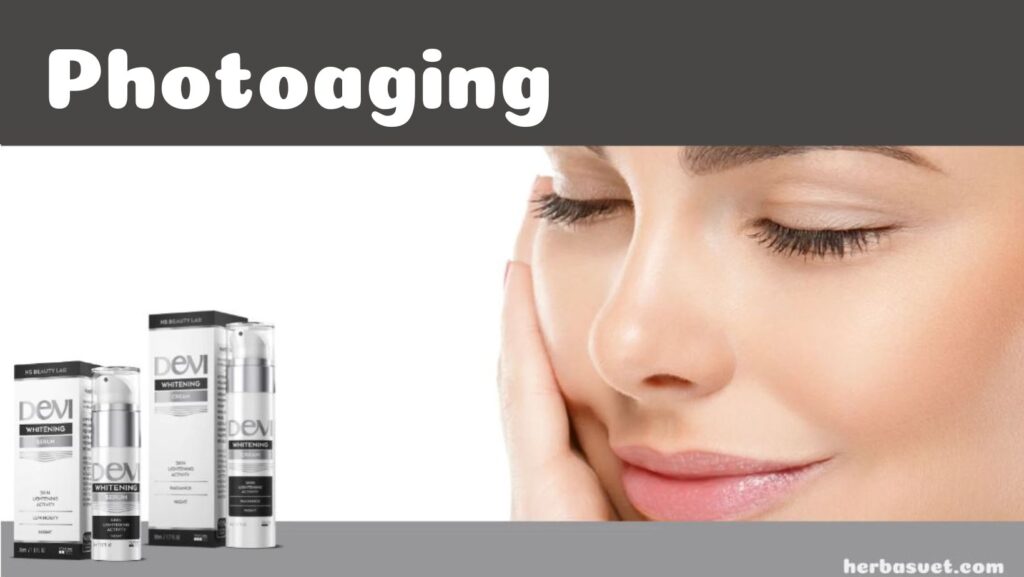As the word itself says, hyperpigmentation is the appearance of excess pigment on the skin, which manifests as dark spots. Age spots, freckles, sunspots, melasma – these are just some names for this phenomenon that appears quickly and easily and is difficult to remove. Although they usually blemish our face, spots also appear on the backs of the hands, shoulders, neck and décolletage, that is, on uncovered parts of the body that are exposed to the sun. Hyperpigmentation most often occurs due to excessive exposure to UV rays, some people are genetically more prone to it and their occurrence is more frequent after the age of 40. The spots themselves can have different colours: brown, black, grey, pink or red.
Our skin naturally contains melanocytes, cells that produce melanin, whose activity determines the shade of our complexion. When the skin is exposed to the sun, its defence mechanism is activated – depending on the length of exposure to UV rays, the appropriate amount of melanin is secreted to absorb the sun’s rays and thus protect the skin. As we age, we gradually lose melanocytes and melanin production becomes more uneven, and so does our complexion. If we excessively expose ourselves to the sun, we risk the appearance of spots that can cover large areas and significantly impair our appearance.
SUN, HORMONES OR INJURIES
Sun is not the only culprit for this, hormones can also be responsible for the appearance of spots, especially during and after pregnancy. Hormonal changes can cause melasma, which usually covers the face and the stomach. This phenomenon, also known as the “pregnancy mask”, affects many pregnant women, up to 90 per cent, and is not rare in women who use oral contraception. It can be a companion to other hormonal disorders, such as an imbalance of thyroid hormones. Low levels of vitamin D, folic acid and vitamin B12 are often present in people with hyperpigmentation.
People with darker skin are more prone to pigment changes, and hyperpigmentation can also be caused by some drugs and chemotherapy. People who suffer from adrenal gland disorders such as Addison’s disease are at special risk. Hyperpigmentation can occur because of injuries, burns or acne.
Unfortunately, hyperpigmentation can sometimes indicate melanoma, so if we notice that one of the spots changes shape or colour, bleeds or hurts, it is important to have a dermatologist examine it immediately.

HOW IS HYPERPIGMENTATION PREVENTED AND REMOVED?
If we want a beautiful and even complexion, it is important to protect our face from the sun. Wearing a broad brimmed hat, applying an adequate protection factor and avoiding the hottest part of the day are some of the most important prevention methods. A healthy diet, sufficient water intake and physical activity are also reflected in our face. But modern science has also come up with new solutions that are very easy to use.
In addition to melanocytes, our skin contains two other types of cells – keratinocytes and fibroblasts. Keratinocytes are the cells that build the epithelium, the surface layer of the skin. These cells are constantly renewed: cells from the deeper layers come to the surface where they replace the existing dead cells. Below the epidermis is the dermis, which consists of fibroblasts. Melanin absorbs UV rays and thus prevents damage to keratinocyte DNA. Modern research has proven that keratinocytes regulate the function of melanocytes. They secrete factors including among others the alpha-melanocyte-stimulating hormone that stimulate receptors on the surface of melanocytes to initiate melanin secretion. The skin functions just like our entire body – through the synergy of different factors. That is why it is not enough to act only on one of the skin’s segments in order to improve it. By acting on all layers of the skin, stimulating collagen formation and deep hydration, we strengthen its structure, stimulate cell metabolism and slow down its aging.
What we know today is that numerous amino acids and peptides directly or indirectly participate in the process of melanin synthesis. Peptides, short polymers of amino acids, are necessary for cell communication, multiplication and migration, expression of membrane proteins, as well as melanogenesis. Soy and rice peptides have been proven to be effective in protecting against UVB radiation: they contribute to the inhibition of tyrosinase, the first stage in the process of melanin synthesis. Palmitoyl tripeptide-38 participates in the process of tissue renewal and remodelling, thus promoting skin regeneration and collagen tissue remodelling. In this way, it does not only restore the skin by reducing the visibility of hyperpigmentation, but it also reduces the visibility of wrinkles. Acetyl hexapeptide-3, also known as Argireline and SYN-AKE, are particularly effective in skin rejuvenation. These are so-called neurotransmitter inhibitor peptides that have an effect similar to Botox – they prevent muscle contractions, which are the main cause of the appearance of deep, mimic wrinkles. Acetyl hexapeptide-8 does not only prevent wrinkles, but it also helps with scars and hidradenitis. Phenylalanine is an amino acid that has been clinically proven to reduce melanin production.
Peptides are not the only great fighters for an even complexion. Biopolymer beta glucan is another ingredient that protects against UV radiation and reduces pigmentation, but it also stimulates collagen synthesis and thus improves the skin’s elasticity and firmness. Particularly useful in the fight against pigmentation is the polyphenol resveratrol, which prevents hyperpigmentation and has also been proven to contribute to brightening the complexion. Alpha arbutin is a phenol and another antioxidant that is a safe alternative to hydroquinone, the famous skin brightener.
Numerous plant extracts have been proven to inhibit melanogenesis without melanotoxicity through various mechanisms and thus affect the reduction of pigmentation and the lightening of the skin. Bearberry is rich in antioxidants that protect the skin from UV radiation. This plant contains arbutin, a glycoside that blocks tyrosinase, the enzyme that produces melanin. Primrose gives the skin radiance and slows down the formation of spots and freckles, ginkgo extract prevents inflammation with its flavonoids and terpenoids, and slows down pigmentation and is even effective in vitiligo. Edelweiss, a plant that is exposed to direct sunlight at high altitudes, has built special protective mechanisms that can also help our skin. Particularly useful are the stem cells of some plants, mountain cranberries and oranges for example. They have strong protective and regenerative properties and strengthen natural protection mechanisms of skin cells. Ferulic acid, a phytonutrient derived from plants, is a powerful antioxidant that has a particularly beneficial effect on endothelial cells and keratinocytes when exposed to UV rays…
All these are just some ingredients of the top-quality Devi cosmetics that comes to us from the Herba Svet laboratory. This completely natural line of cosmetics combines effective ingredients that fight skin aging, hyperpigmentation, skin laxity, wrinkles and uneven complexion. By combining hyaluronic acid, peptides and plant extracts, Botomix Serum provides the face with an intensive EGF and TGF treatment that mimics the effect of Botox. Serum Anti Age combines hyaluronic acid, coenzyme Q-10, peptides, vitamins and nourishing oils, while Anti-Ox Serum contains ferulic acid, squalane and ginkgo extract as its main asset. Clear Skin Gel effectively solves imperfections, especially in acne-prone skin. In addition to the tightening and lifting effects, Illuminative Cream also gives a glowing complexion. There are also two products specially designed for brightening the complexion: Whitening Serum and Whitening Cream.
Devi creams and serums are suitable for all skin types, suitable even for the most sensitive skin, and they effectively fight against all signs of aging. With a bit of help from them and a broad-brimmed hat, the sun can’t do us any harm!

